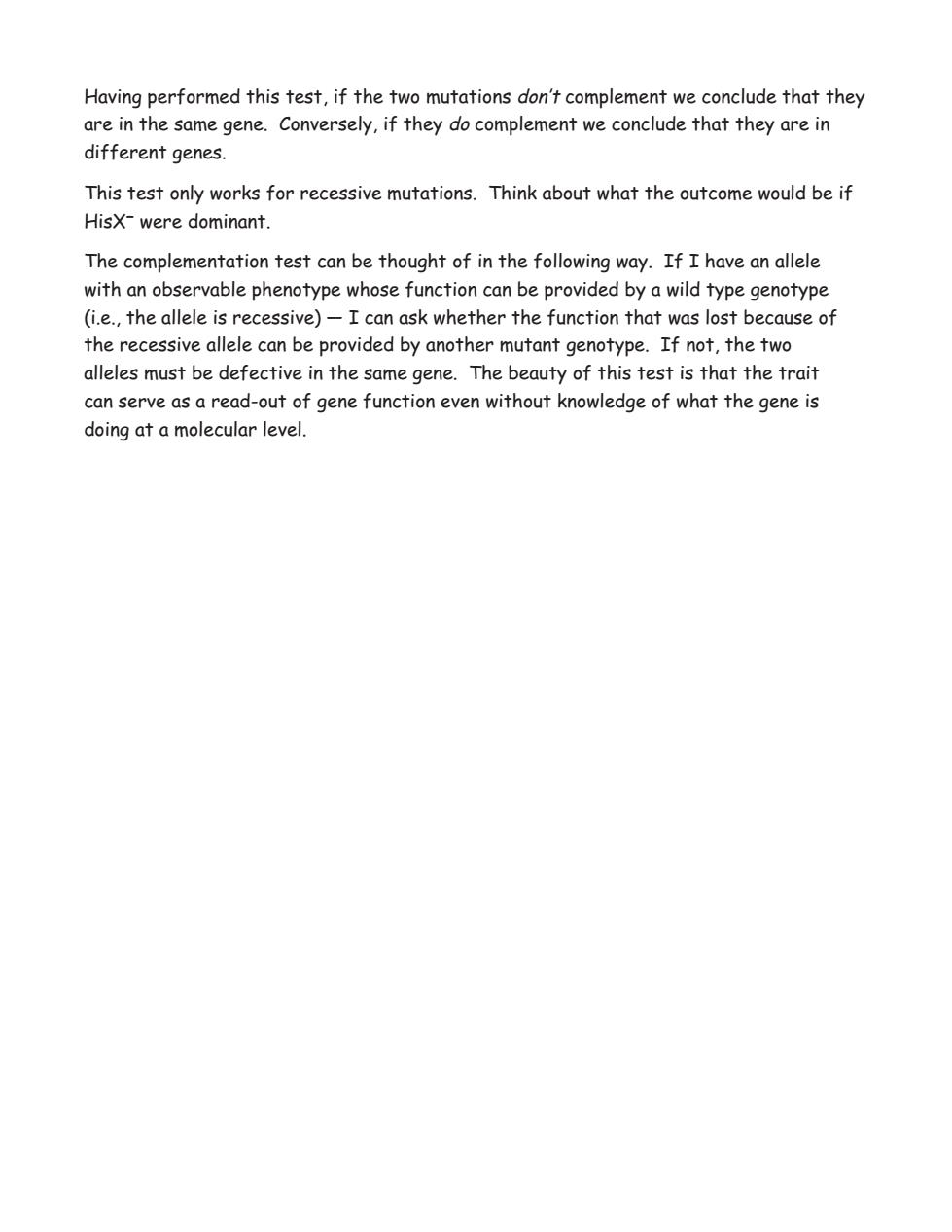正在加载图片...

Having performed this test,if the two mutations don't complement we conclude that they are in the same gene.Conversely,if they do complement we conclude that they are in different genes. This test only works for recessive mutations.Think about what the outcome would be if HisX-were dominant. The complementation test can be thought of in the following way.If I have an allele with an observable phenotype whose function can be provided by a wild type genotype (i.e.,the allele is recessive)-I can ask whether the function that was lost because of the recessive allele can be provided by another mutant genotype.If not,the two alleles must be defective in the same gene.The beauty of this test is that the trait can serve as a read-out of gene function even without knowledge of what the gene is doing at a molecular level.Having performed this test, if the two mutations don’t complement we conclude that they are in the same gene. Conversely, if they do complement we conclude that they are in different genes. This test only works for recessive mutations. Think about what the outcome would be if HisX– were dominant. The complementation test can be thought of in the following way. If I have an allele with an observable phenotype whose function can be provided by a wild type genotype (i.e., the allele is recessive) — I can ask whether the function that was lost because of the recessive allele can be provided by another mutant genotype. If not, the two alleles must be defective in the same gene. The beauty of this test is that the trait can serve as a read-out of gene function even without knowledge of what the gene is doing at a molecular level